JournalismPakistan.com | Published February 26, 2025 at 07:49 pm | Dr. Nauman Niaz (TI)
Join our WhatsApp channel
Pakistan Fast Bowlers
Triangular Series & ICC Champions Trophy 2025
|
Bowler |
Matches |
Innings |
Overs |
Maidens |
Runs |
Wickets |
Average |
Economy |
Strike Rate |
4WI |
5WI |
|---|---|---|---|---|---|---|---|---|---|---|---|
|
Shaheen Afridi |
5 |
5 |
47 |
0 |
341 |
8 |
42.62 |
7.25 |
35.2 |
0 |
0 |
|
Naseem Shah |
5 |
5 |
46 |
0 |
281 |
5 |
56.20 |
6.1 |
55.2 |
0 |
0 |
|
Haris Rauf |
3 |
3 |
23.2 |
0 |
158 |
3 |
52.66 |
6.77 |
46.2 |
0 |
0 |
|
Faheem Ashraf |
1 |
1 |
2.2 |
0 |
16 |
0 |
- |
- |
|
0 |
0 |
|
Mohammad Hasnain |
1 |
1 |
8 |
0 |
72 |
0 |
- |
- |
|
0 |
0 |
With this show and performance, Pakistan intended to triumph in the ICC Champions Trophy 2025, an illusion.
SHAHEEN SHAH AFRIDI BEFORE AND AFTER INJURY
|
|
Span |
Matches |
Innings |
Overs |
Maidens |
Runs |
Wickets |
Average |
Economy |
Strike Rate |
4 WI |
5 WI |
|
Career |
2018-2025 |
64 |
63 |
548 |
28 |
3095 |
127 |
24.37 |
5.64 |
25.8 |
7 |
3 |
|
Pre-Injury |
2018-2022 |
32 |
31 |
268.3 |
15 |
1480 |
62 |
23.87 |
5.51 |
25.9 |
5 |
2 |
|
Post Injury |
2023- |
32 |
32 |
279.3 |
13 |
1615 |
65 |
24.84 |
5.77 |
25.8 |
2 |
1 |
The Start
Some cricketers surface from the constructs of systematic development, polished, refined, the by-products of carefully orchestrated tiers of age-group cricket. And then, some defy such structured evolution, arriving instead as forces of nature, raw, instinctive, and untamed.
Contrary to the paradoxical narrative that would later claim him as a franchise product, Shaheen Shah Afridi’s career was neither curated nor contrived. His surge was shaped through the rugged alleys of Pakistan’s Under-16 and Under-19 circuits, where his name was not only selected but earned. He represented Pakistan ‘A’ (Shaheens), where his raw brilliance was unmistakable.
It was in 2017, during the Quaid-i-Azam Trophy, that Shaheen truly announced himself. Representing Khan Research Laboratories (KRL) against Rawalpindi, he was not only handed a place and a debut, he was entrusted with responsibility, a recognition of something beyond the numbers. The very act of being picked by KRL spoke volumes; it was a selection that carried with it a tacit acknowledgment of his undeniable potential. He ended his debut with a second-innings haul of eight wickets and was all over the news.
Shaheen Shah Afridi’s start was never one of privilege nor a consequence of opportunistic selection. It was a role earned, sculpted with sweat, perseverance, and an innate genius that could not be overlooked.
His first steps in the international framework came in November 2015, when he represented Pakistan Under-16s in Australia. From there, his name echoed through the Pepsi PCB Cricket Stars U-16s Tournament in May 2016, a proving ground where raw talent met the eye of discerning selectors. Their judgment was swift, for there was something undeniable about this young left-armer, not only a bowler but a phenomenon in the making.
By December 2016, he had ascended to the Pakistan Under-19s, taking his place in the Asian Cricket Council U-19s Asia Cup. He was no longer just a prospect; he was a force, an enigma who rebutted convention. In that tournament, he bowled against Sri Lanka, Malaysia, New Zealand, and Australia, prescribing his name further into the selectors' consciousness.
Then came the grander stage, the ICC U-19 World Cup in 2018, where he represented Pakistan. By this time, however, he was no longer a boy only promising greatness, he was delivering it.
His ascension to First-Class cricket in September 2017 was but a natural consequence, not an ambition forced but one realized through the sheer inevitability of his ability. And then, as the commercial machines of franchise cricket sought to lay claim to his rise, Lahore Qalandars hired his services in February 2018. But his story was never one of franchises or fleeting recognition. Shaheen’s rise was elemental, unpredictable yet certain like a tempest waiting to announce itself.
False Claims
Franchises would come later, seeking to lay claim to his rise. But the truth remained undisputable, Shaheen was not a creation of any commercial entity, nor a product of engineering. His cricket was born in the untouched realms of natural brilliance, not fashioned by academies but forged in the primal energies and intensities of raw talent.
Shaheen was never a product of commercial cricketing academies nor the artificial machinery of player grooming. He was not manufactured; he was discovered. Born into a cricketing family in the rugged terrains of Khyber, his path was neither calculated nor conventional. His elder brother, Riaz Afridi, himself a Test cricketer was both his chaperon and window into the world of professional cricket. From Pakistan's U-16 circuit to the U-19s, he was not merely selected, he was recognized. A talent so unmistakable that it demanded acknowledgment.
It was not only his height, nor his pace, nor his left-arm angle that set him apart. It was something far more instinctive, and natural, a rhythm with the ball that defied coaching manuals. The ability to bring the ball in with late movement, to make batsmen second-guess the very laws of physics, was not a skill that could be taught.
The Making of a Phenomenon
Eight wickets on First Class debut, a performance was no fluke. It was a glimpse into the inevitable, the rise of a bowler who did not merely aspire to greatness but was destined for it. What followed was a whirlwind ascent, Pakistan 'A', international call-ups, and the reverence of the cricketing world.
But at its core, Shaheen Shah Afridi's career remains a witness to something far greater than statistics and wickets. He is a reminder that not all brilliance can be engineered. Some talents emerge not from structured systems, but from an inexplicable cosmic force, unpredictable, untamed, and utterly magnificent.
Shaheen Shah Afridi’s rise was meteoric, his impact seismic, and his downfall, tragic. A left arm quick of rare pedigree, he was the quintessence of raw, untamed pace, tall, angular, and impossibly loose-limbed, with the flamingo-like poise of a thoroughbred. His action, though unorthodox, possessed the most coveted weapon in fast bowling: the ability to bring the ball back into the right-hander at searing pace. With self-belief bordering on defiance, he announced himself to the world, not with words, but with performances that shattered batting line-ups and silenced doubters.
From the Pakistan youth system to First-Class cricket and beyond, Shaheen exuded vigor, energy, and an unshakeable confidence that belied his years. His early performances were not only glimpses of promise but statements of intent, fearless, brutal, and utterly decisive. In times when genuine fast bowlers were becoming a rarity, Afridi was a gift, an anomaly of biomechanics, a throwback to the days when fast bowling was an art form laced with menace.
The Descent and Undoing of a Star
But Pakistan’s cricketing establishment, ever the architect of its misfortunes, failed him. A system already plagued by mediocrity, inadequacy, and sheer incompetence did what it does best, it took a thoroughbred and left him broken.
The writing was on the wall in Sri Lanka, in 2022. Stopping a boundary, an act of professional commitment rather than caution, he sustained a knee injury. It was an impact injury, one that should have been assessed with the highest level of medical scrutiny. But what followed was nothing short of criminal neglect.
Instead of leaving him behind to recuperate, Cliffe Deacon, the team’s imported physiotherapist, insisted he travel with the squad to the Netherlands. A ludicrous decision, one that speaks volumes of the shambolic medical governance within Pakistan cricket. No proper assessment, no structured rehabilitation, only a blind, reckless march forward.
From Bad to Worse: The Botched Rehabilitation
By the time the gravity of his injury became apparent, it was too late. He was hastily dispatched to the United Kingdom for rehabilitation, another episode in Pakistan’s hallmark reactionary chaos. But even that was a farce. He was brought back prematurely, thrown into the cauldron of the ICC T20 World Cup in Australia, in 2022.
What followed was predictable. His body was broken, his rhythm shattered, and his biomechanics irreversibly altered. This was not the Shaheen Shah Afridi who once sent the crowd in raptures. This was a mere shadow of the force he once was. His pace dipped, his movement was labored, and the unplayable inswinger, the very essence of his craft, was no longer it once had been.
Identifying Shaheen Shah Afridi's Post-Rehabilitation BioMchanical Issues?
To compensate for the biomechanical stress imposed by a weakening knee, Shaheen Shah Afridi subconsciously engaged both arms as hyper-functioning counterbalances (levers), inadvertently disrupting the natural synchrony of his kinetic chain. This maladaptive adjustment led to a cascade of mechanical misalignments, particularly during the critical phases of his bowling action, loading, jump, and front-foot landing.
At the point of loading, his body, lacking structural equilibrium, began to deviate outwardly. The front-foot landing, displaced from optimal alignment, resulted in an increased lateral shift, misdirecting his momentum upon impact. In a subconscious effort to protect the compromised knee, his upper body was propelled outward, triggering a chain reaction of positional anomalies.
As he approached delivery, the front toe, now oriented towards the slips, compromised the integrity of his ankle position, which remained semi-rotated in the same direction. This half-rotation misdirected the alignment of his thigh towards the square leg, creating inefficiencies in his force transfer. Consequently, at the point of release against a right-handed batter, his arm trajectory pointed unnaturally toward the slips, while his upper body, destabilized, veered towards the square leg.
These misalignments significantly impacted his ability to achieve biomechanical efficiency, ultimately inhibiting wrist locking and optimal seam positioning, both of which are crucial for precision and variation. The cumulative effect has been a noticeable decline in his wicket-taking capability, as the compromised kinetic chain has stripped his bowling of its former menace.
You Can Still Have Best of Shaheen Shah Afridi
The Individual Peak Performance Pyramid (IPPP) serves as an integrative framework in sports science, delineating the hierarchical structure necessary for an athlete to attain and sustain optimal biomechanical efficiency, physiological robustness, and psychological resilience. It is within this construct that we must examine the rehabilitation of Shaheen Shah Afridi, whose biomechanical aberrations post-injury have demonstrably compromised his efficacy as a fast bowler.
The Three-Tiered-Structure of Peak Performance
At the base of the pyramid lies the structural integrity of the kinetic chain—a crucial determinant of athletic efficiency. Injury-induced maladaptations, particularly in unilateral load-bearing sports such as fast bowling, tend to propagate compensatory mechanisms, leading to an exacerbation of mechanical inefficiencies.
In Afridi’s case, his displaced front-foot landing, lateral torso deviation, and hyperactive counterbalancing of the arms suggest a subconscious protective response to mitigate strain on the compromised knee. The misalignment of his foot strike, ankle semi-rotation, and excessive outward shift of the upper body collectively disrupt the force vectors required for effective delivery mechanics.
Rehabilitation at this level must focus on restoring kinetic chain synchrony through proprioceptive recalibration, progressive eccentric loading, and corrective neuromuscular activation to re-establish optimal ground reaction forces during the bowling stride.
The intermediate tier addresses neuromuscular efficiency, particularly in the context of load symmetry and force transduction. The human body, when confronted with an injury, undergoes adaptive neuromuscular reprogramming, often reinforcing non-ideal movement patterns.
Afridi's persistent upper-body misalignment and compromised limb positioning suggest an inadequate reintegration of dynamic stability post-rehabilitation. The objective at this level is to employ targeted kinetic chain re-education, incorporating dynamic resistance training, proprioceptive drills, and load reallocation strategies to restore symmetrical energy dissipation upon impact.
At the apex of the pyramid lies performance optimization, wherein biomechanical efficiency is harmonized with tactical execution, mental fortitude, and physiological endurance. A bowler’s ability to function at peak levels is not only a function of mechanical precision but of cognitive proprioception, enabling an intuitive command over force vectors, release points, and seam positioning.
Afridi’s biomechanical regressions have resulted in diminished wrist-lock precision, disrupted follow-through mechanics, and reduced velocity consistency—all of which have detracted from his previously formidable wicket-taking prowess. At this level, rehabilitation must involve sport-specific reconditioning, employing video-assisted motion capture analysis, advanced kinetic modeling, and high-intensity bowling simulations to reinstate competitive readiness.
The failure to reintegrate Afridi’s kinetic chain synchronization post-injury has led to compensatory mechanical deviations that have compromised his performance trajectory.
A systematic rehabilitation strategy, guided by the Individual Peak Performance Pyramid, is imperative, not only for structural correction but also for sustainable performance resurgence.
For an athlete of Afridi’s caliber, true rehabilitation is not a just return to the previous function, but a progression towards an evolved biomechanical paradigm, one that mitigates prior inefficiencies and optimizes physiological longevity.
A System That Betrayed Its Own
Shaheen’s downfall is not just the story of a fast bowler mismanaged, it is a damning indictment of Pakistan’s cricketing incompetence. The lack of a coherent medical panel, the amateurish handling of elite athletes, and the inexplicable faith in imported mediocrity all played their part. This was negligence, pure and simple. A nation that once prided itself on producing world-class fast bowlers had taken its brightest and left him battered, bereft of his former self.
Shaheen Shah Afridi was not just a bowler. He was Pakistan’s answer to a dwindling fast-bowling legacy, the flag-bearer of a dying art. But in the hands of an inept system, he became another cautionary tale, another victim of Pakistan cricket’s historical apathy towards its heroes.
The tragedy is not just that Shaheen fell. The tragedy is that he was pushed.
Dr. Nauman Niaz is a Fellow of the Royal College of Physicians of London, Edinburgh, Ireland, and Glasgow, PhD from the University of Western Australia, a Post-Doctorate from the University of Oxford, CST (Endocrinology, United Kingdom), a Member Royal College of the Physicians and MSc Biomechanics & Kinesiology, University of Western Australia.
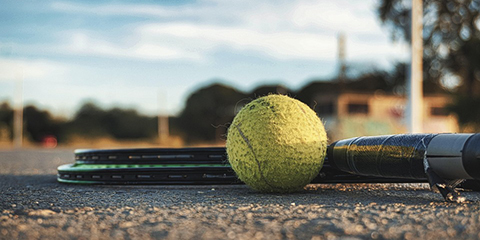
March 15, 2025: Explore the dynamic relationship between athletes and sports journalists, examining the challenges, ethical dilemmas, and mutual benefits that shape the sports media landscape.
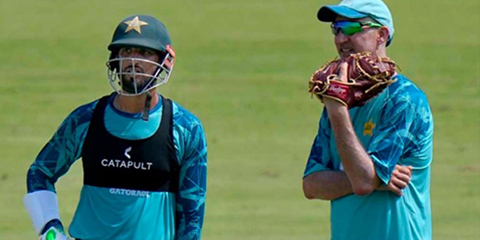
March 08, 2025: An in-depth analysis of Pakistan cricket's descent into chaos under Aaqib Javed's leadership, examining the controversial selection decisions, political interference, and systemic failures that undermined the national team ahead of the ICC Champions Trophy 2025.
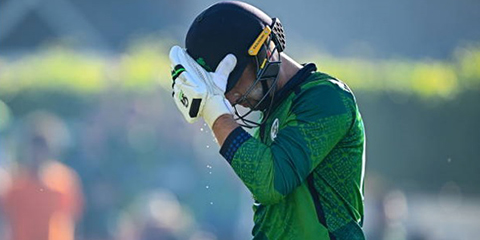
March 02, 2025: An unsparing analysis of Pakistan's Champions Trophy 2025 squad selection reveals not merely inexperience but a systemic rot of patronage networks, political expedience, and intellectual bankruptcy within Pakistan's cricket governance, continuing a tragic history of selection failures.

March 01, 2025: Pakistan cricket's selection paradox: a system where players like Babar Azam thrive despite, not because of, the process. This analysis reveals how positional shifts, political decisions, and philosophical failures continue to undermine a team capable of brilliance but hamstrung by a selection committee that mistakes chaos for strategy.
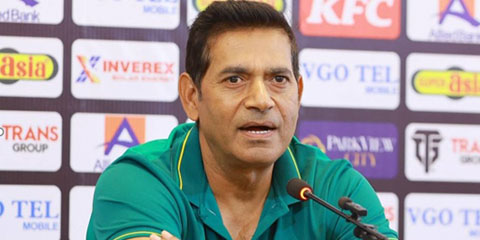
February 28, 2025: An in-depth analysis of Pakistan cricket's selection dysfunction ahead of the ICC Champions Trophy 2025, examines how the absence of a philosophical framework has led to incoherent squad choices, conflicting decisions, and a system that prioritizes survival over strategy.
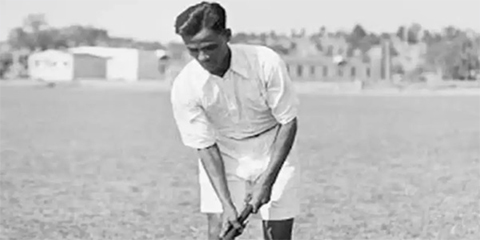
February 26, 2025: Explore the extraordinary legacy of Major Dhyan Chand, India's hockey wizard who redefined the sport, won three Olympic golds, and inspired generations with his unmatched brilliance.
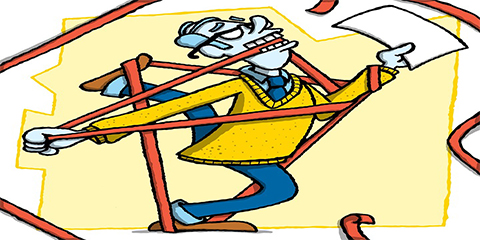
February 24, 2025: An incisive analysis of Pakistan cricket's systemic failures, examining how bureaucratic inertia, self-serving former players and resistance to modernization have eroded the nation's cricketing excellence despite abundant talent.

February 21, 2025: Delve into the complex challenges facing Pakistan cricket as it grapples with outdated systems, political interference, and resistance to modernization. Dr. Nauman Niaz reveals how the transition from passion-driven success to bureaucratic inefficiency has left Pakistan's cricket legacy hanging in the balance.

April 11, 2025 Sindhi journalist AD Shar was brutally murdered in Khairpur, Sindh. His body was found dumped on Handiyari Link Road. PFUJ has declared a three-day mourning period and demanded justice.

April 10, 2025 The Azad Jammu and Kashmir government has filed a case against The Daily Jammu & Kashmir and its staff for alleged fake news, drawing condemnation from PFUJ and IFJ, who demand immediate withdrawal of the FIR and an end to media repression in Pakistan.

April 08, 2025 Journalist Arzoo Kazmi alleges that Pakistan's state agencies, including the FIA, have blocked her CNIC, passport, and bank account while threatening her. She calls it a direct attack on journalism.

April 07, 2025 The Islamabad High Court has directed IG Islamabad to produce journalist Ahmad Noorani’s missing brothers, as the Ministry of Defence denies custody. SIM activity was traced in Bahawalpur, and investigations into their suspected abduction continue.
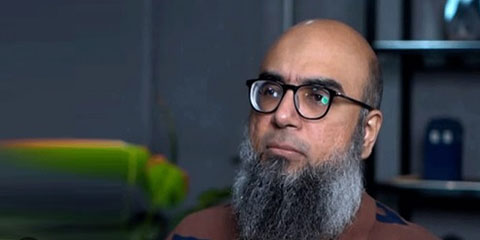
April 07, 2025 Journalist and Raftar founder Farhan Mallick has been granted bail by a Karachi court in a case concerning anti-state content aired on his YouTube channel. He still faces separate charges related to an alleged illegal call center and data theft.